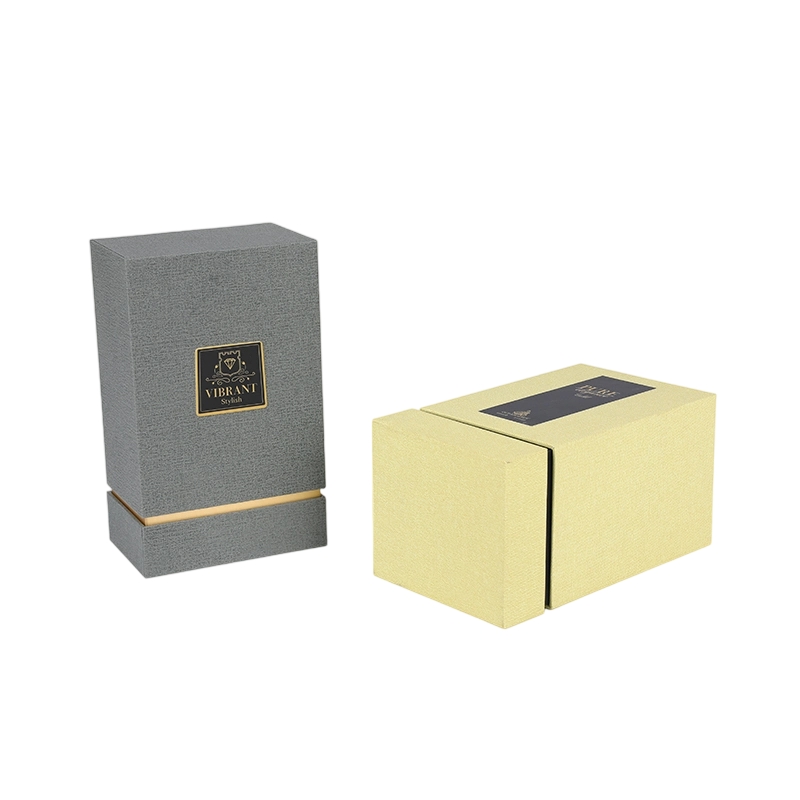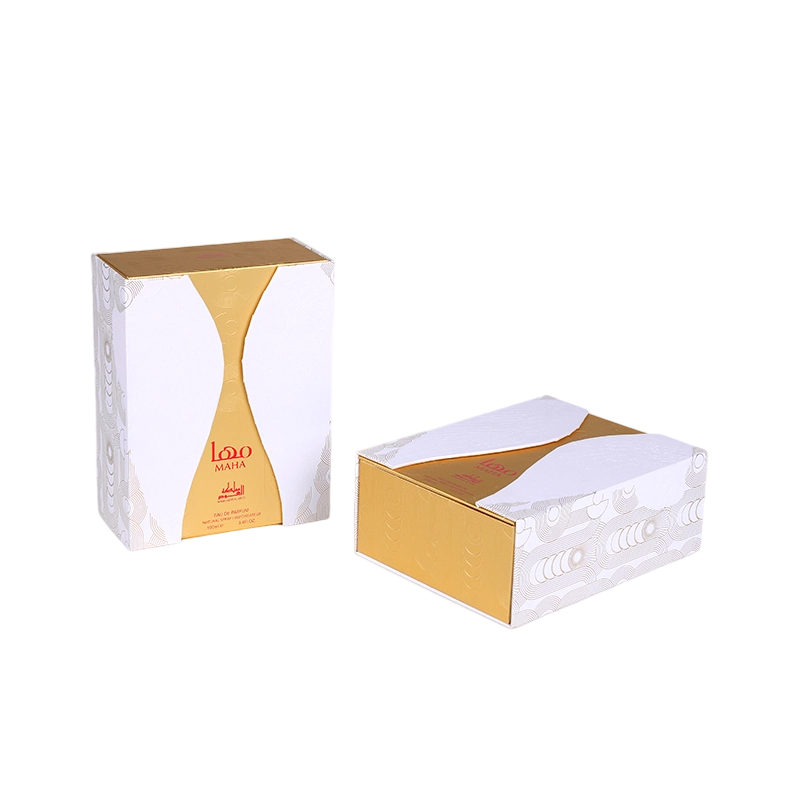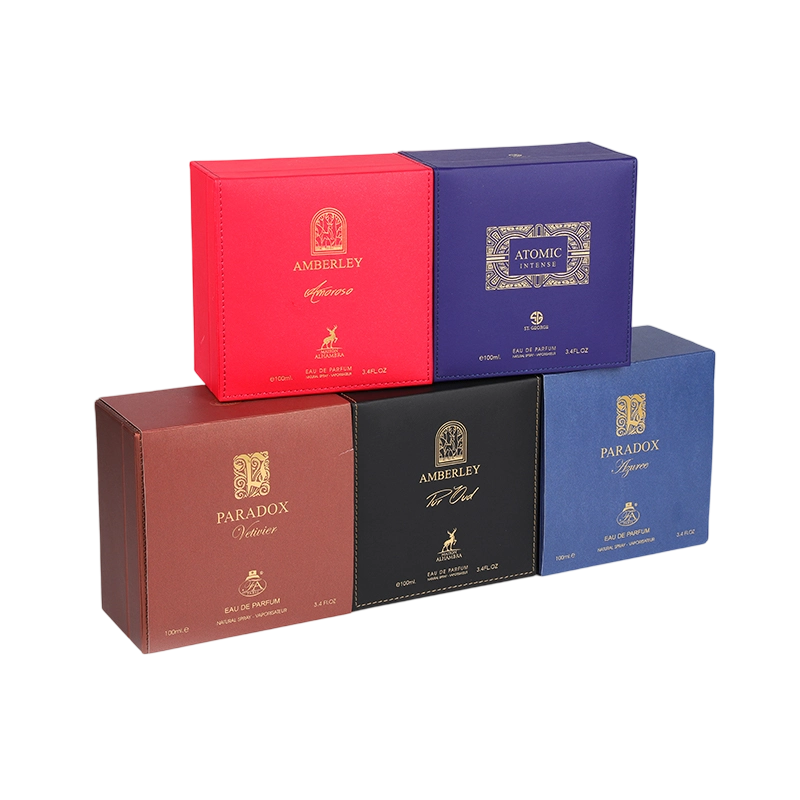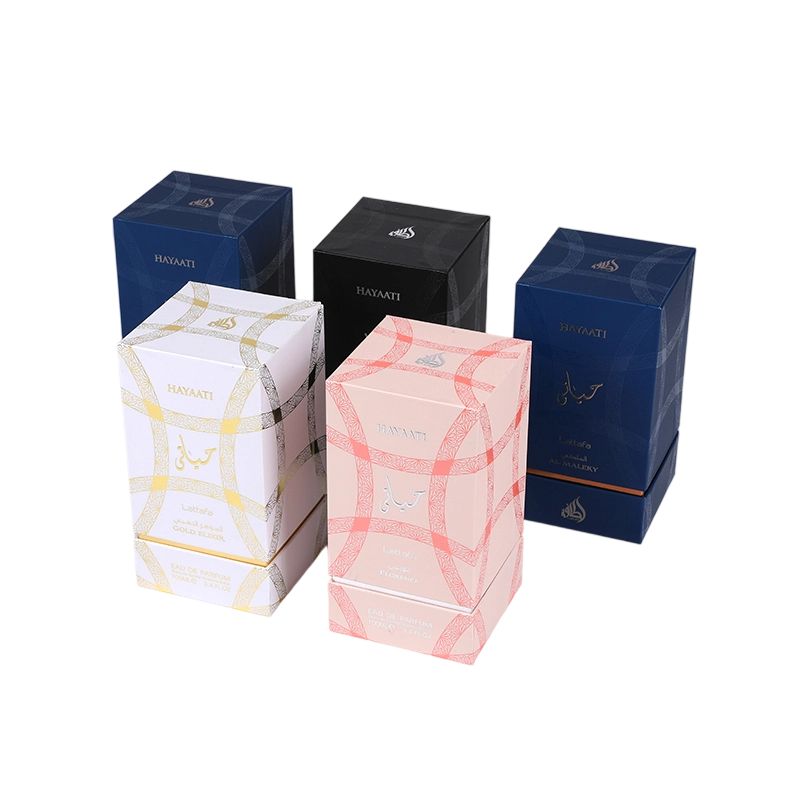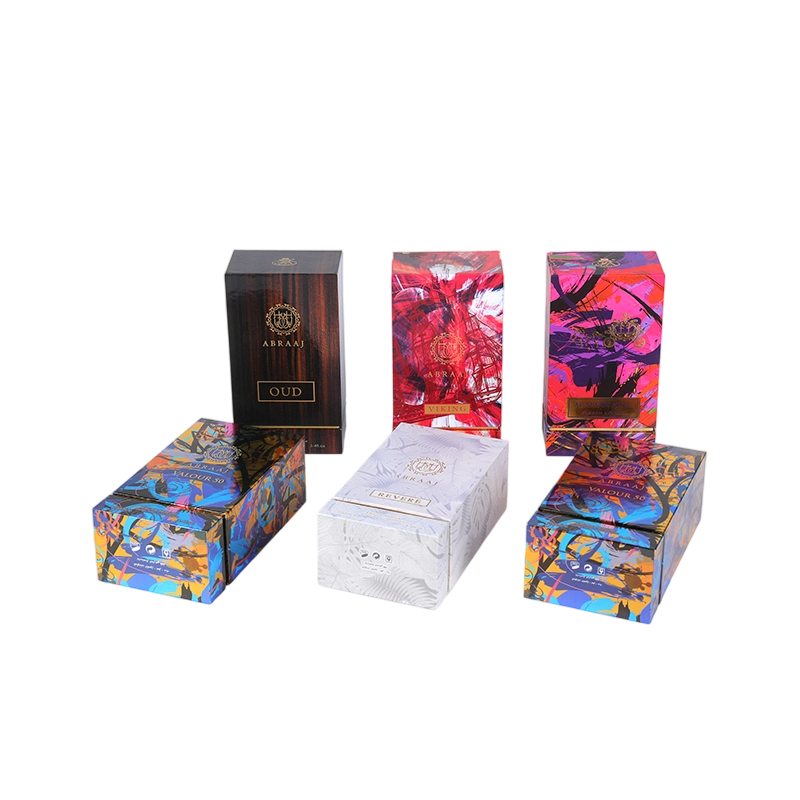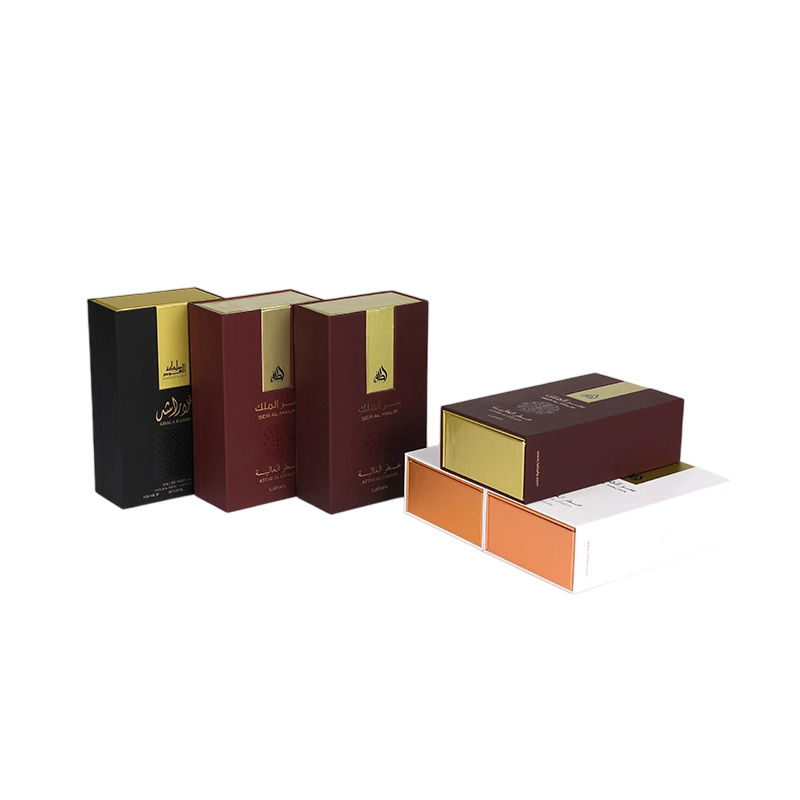The structural design of a Perfume Box is meticulously crafted to balance the dual objectives of transportation protection and user experience, ensuring the safe delivery of delicate perfume bottles while providing a luxurious and satisfying interaction for the user. This balance is achieved through innovative material choices, functional design, and aesthetic considerations.
Perfume bottles are typically fragile, often made of glass, and require robust protection during transit. Structural design addresses this with:
Boxes are commonly constructed from rigid cardboard, corrugated fiberboard, or reinforced plastics. These materials absorb shocks and resist compression to safeguard the bottle.Features like double-walled designs or reinforced corners add stability and durability, reducing vulnerability to impact during shipping.
Foam inserts, molded plastic trays, or paperboard dividers securely hold the bottle in place, minimizing movement and absorbing vibrations.The internal structure is often custom-shaped to cradle the bottle snugly, preventing it from sliding or hitting the box walls during transit.
Strong magnetic flaps, adhesive seals, or locking mechanisms ensure the box remains tightly closed, protecting the contents from accidental opening and external contaminants like dust or moisture.
While protection is critical, the perfume box also serves as a user’s first physical interaction with the product, and its design must enhance the overall brand experience.

Thoughtfully designed opening systems, such as slide-out trays, magnetic closures, or ribbon pulls, create a smooth and satisfying unboxing process without causing frustration.Layered packaging or compartments offer a “reveal” effect, heightening the sense of excitement and luxury.
Premium finishes like embossing, foil stamping, or high-quality printing align with the brand’s identity and enhance the box’s appeal.Soft-touch coatings or velvet-textured inserts provide a tactile sensation of quality and sophistication.
Many high-end perfume boxes are designed to be reusable, serving as decorative storage items or keepsakes, extending their functional life beyond the initial purchase.
The balance lies in designing a box that protects its contents without compromising the user’s interaction.
The box minimizes empty space while ensuring sufficient cushioning. Compact designs reduce transportation costs and environmental impact while maintaining an aesthetically pleasing and practical form factor.
Lightweight materials are chosen to reduce shipping costs while providing adequate protection. This keeps the box easy to handle for users and eco-friendly in transit.Sustainable materials such as recycled cardboard or biodegradable inserts provide an environmentally conscious option without sacrificing structural integrity or aesthetic appeal.Simple yet elegant designs avoid overly complex opening mechanisms that might frustrate the user while retaining a sense of exclusivity and sophistication.
Some designs incorporate protective features like foam padding into visually pleasing elements, such as decorative inner linings.Interactive Design: Boxes with magnetic lids or hidden compartments enhance the luxury feel while ensuring security during transit.Thoughtful visual cues or tactile elements within the box help communicate the brand’s values, adding emotional resonance to the experience.
The structural design of a Perfume Box is a fine balance between ensuring transportation protection and delivering an exceptional user experience. By combining strong materials, innovative cushioning, and secure closures with elegant, user-friendly features, the design ensures the perfume bottle reaches its destination safely while offering an engaging and memorable interaction that aligns with the brand’s identity and the consumer’s expectations.

 English
English 中文简体
中文简体 عربى
عربى
